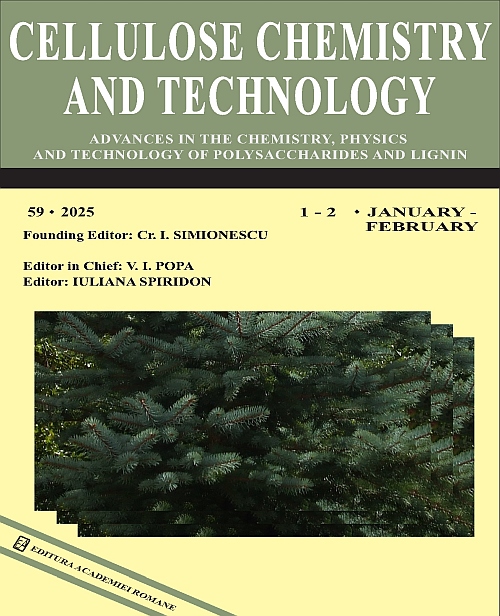|
Title
Low-cost treatment of real effluent wastewater containing lead ions using carboxymethyl cellulose and polymethyl methacrylate based membranes
Authors
OMAR AROUS, WALID MANSOUR, KENZA LAMRI and OUARDA MERDOUD
Received
December 26, 2024
Published
Volume 59 Issue 3-4 March-April
Keywords
carboxymethyl cellulose, heavy metals, membranes, water purification, dialysis
Abstract
Membrane technologies have emerged as a great possibility in wastewater treatment, exhibiting high selectivity,
resulting in high-quality effluent and low sludge production, with reduced equipment size and low energy
requirements, being low cost and allowing to merge several treatment processes into one. The aim of this work has
been the synthesis of new polymeric membranes for water purification, especially for the removal of various toxic
pollutants, such as lead (II) ions. One of the most promising solutions for recycling and reusing wastewater is the
installation of membrane filtration systems that can guarantee water purification. During this work, a new class of
organic membranes for ions elimination was developed. The membranes were synthesized using carboxymethyl
cellulose (CMC) and poly-methyl methacrylate (PMMA), plasticized by dioctyl phtalate (DOP) or glycerol, and modified
by the incorporation of D2EHPA using as a selective carrier. All synthesized membranes were characterized by Fourier
transform infrared (FTIR) spectroscopy, thermogravimetric analysis (TGA) and contact angle measurements. A study of
Pb(II) retention using the synthesized membranes was realized. Dialysis experiments of Pb(II) transfer across the polymer
inclusion membranes have proved their good performance. The treatment of an industrial effluent containing 56.5 mg.L
1of lead gave very satisfactory results, where it was noticed that the membranes based on DOP eliminated practically
58% of lead.
Link
https://doi.org/10.35812/CelluloseChemTechnol.2025.59.22
|



